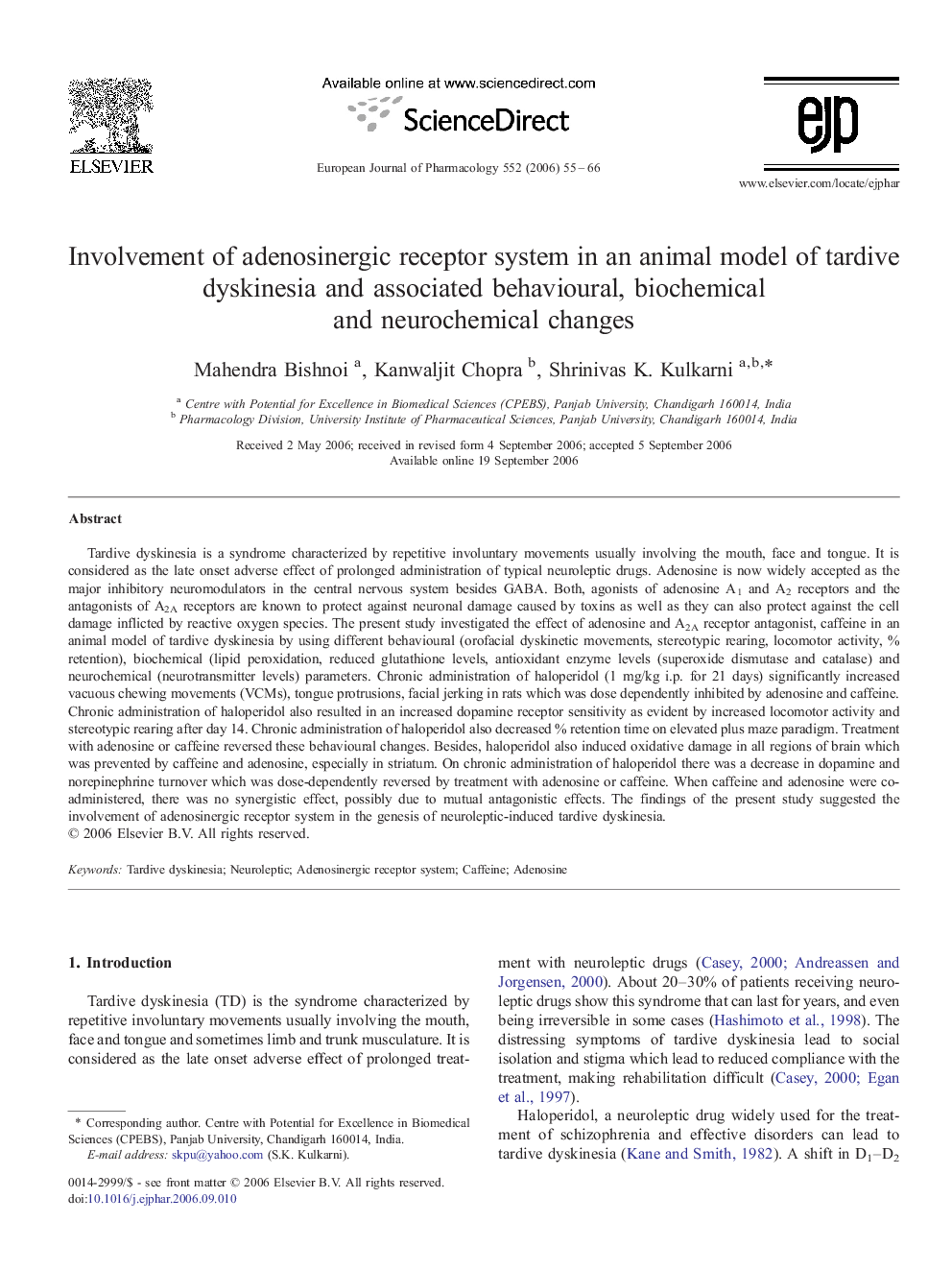| کد مقاله | کد نشریه | سال انتشار | مقاله انگلیسی | نسخه تمام متن |
|---|---|---|---|---|
| 2536688 | 1559163 | 2006 | 12 صفحه PDF | دانلود رایگان |

Tardive dyskinesia is a syndrome characterized by repetitive involuntary movements usually involving the mouth, face and tongue. It is considered as the late onset adverse effect of prolonged administration of typical neuroleptic drugs. Adenosine is now widely accepted as the major inhibitory neuromodulators in the central nervous system besides GABA. Both, agonists of adenosine A1 and A2 receptors and the antagonists of A2A receptors are known to protect against neuronal damage caused by toxins as well as they can also protect against the cell damage inflicted by reactive oxygen species. The present study investigated the effect of adenosine and A2A receptor antagonist, caffeine in an animal model of tardive dyskinesia by using different behavioural (orofacial dyskinetic movements, stereotypic rearing, locomotor activity, % retention), biochemical (lipid peroxidation, reduced glutathione levels, antioxidant enzyme levels (superoxide dismutase and catalase) and neurochemical (neurotransmitter levels) parameters. Chronic administration of haloperidol (1 mg/kg i.p. for 21 days) significantly increased vacuous chewing movements (VCMs), tongue protrusions, facial jerking in rats which was dose dependently inhibited by adenosine and caffeine. Chronic administration of haloperidol also resulted in an increased dopamine receptor sensitivity as evident by increased locomotor activity and stereotypic rearing after day 14. Chronic administration of haloperidol also decreased % retention time on elevated plus maze paradigm. Treatment with adenosine or caffeine reversed these behavioural changes. Besides, haloperidol also induced oxidative damage in all regions of brain which was prevented by caffeine and adenosine, especially in striatum. On chronic administration of haloperidol there was a decrease in dopamine and norepinephrine turnover which was dose-dependently reversed by treatment with adenosine or caffeine. When caffeine and adenosine were co-administered, there was no synergistic effect, possibly due to mutual antagonistic effects. The findings of the present study suggested the involvement of adenosinergic receptor system in the genesis of neuroleptic-induced tardive dyskinesia.
Journal: European Journal of Pharmacology - Volume 552, Issues 1–3, 15 December 2006, Pages 55–66